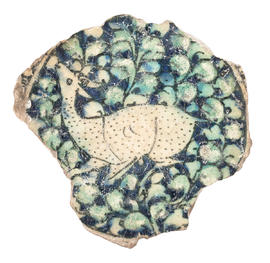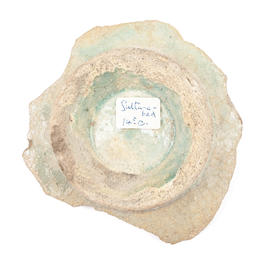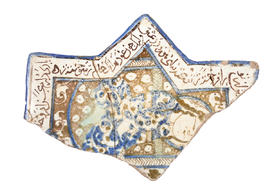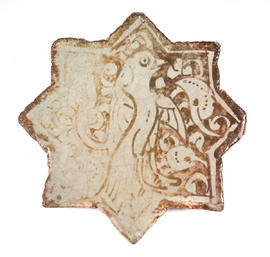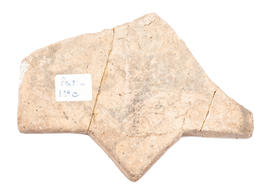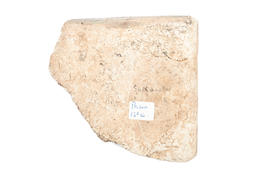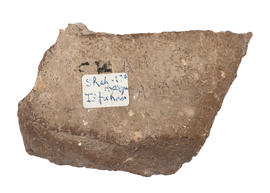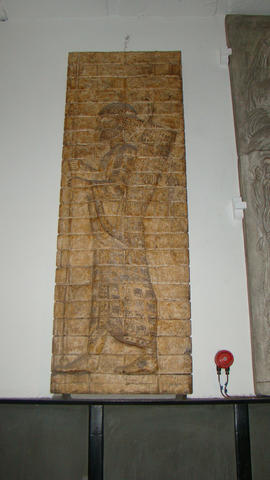Ceramic fragment from the bottom of a ceramic vase
- NMC/0916F
- Item
- 19th century
Polychrome (blue, green) glazed fragment from the bottom of a ceramic vase with handpainted spotted animal, possibly a deer, surronded by a floral design. Label on verso - 'Sultanabad 14th C.' Sulatanabad is a city, now known as Arak, in Iran.
*Not available / given

